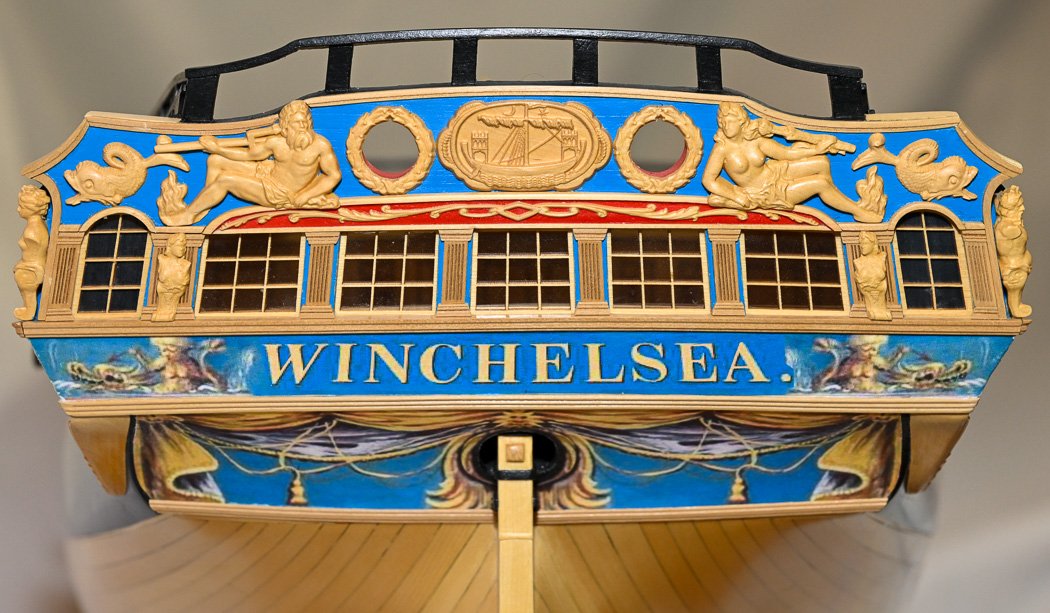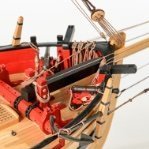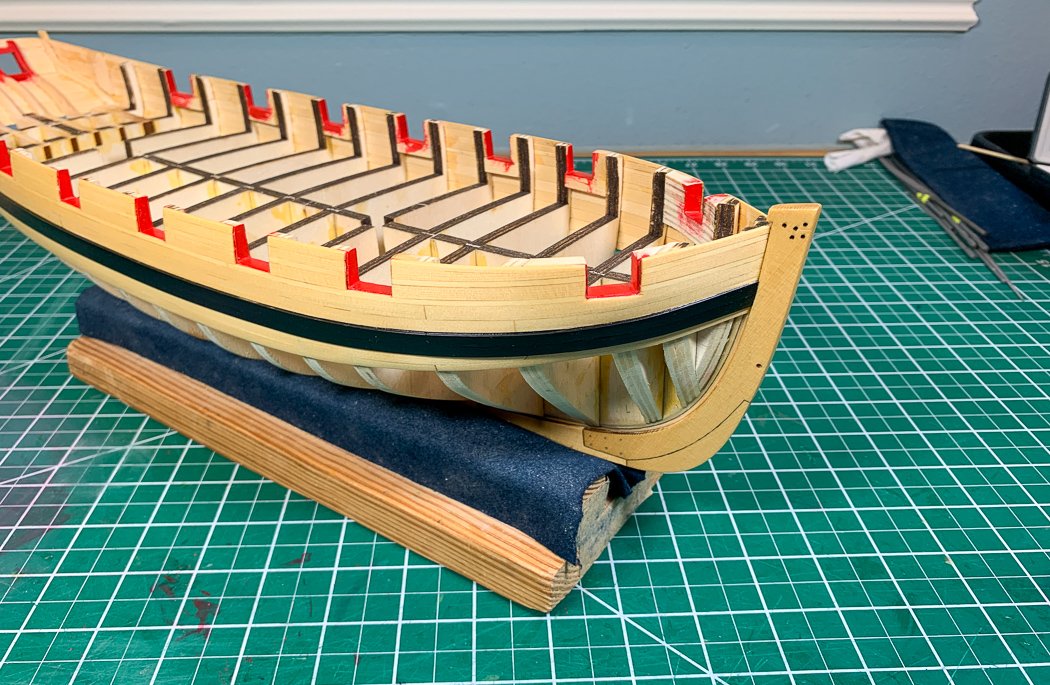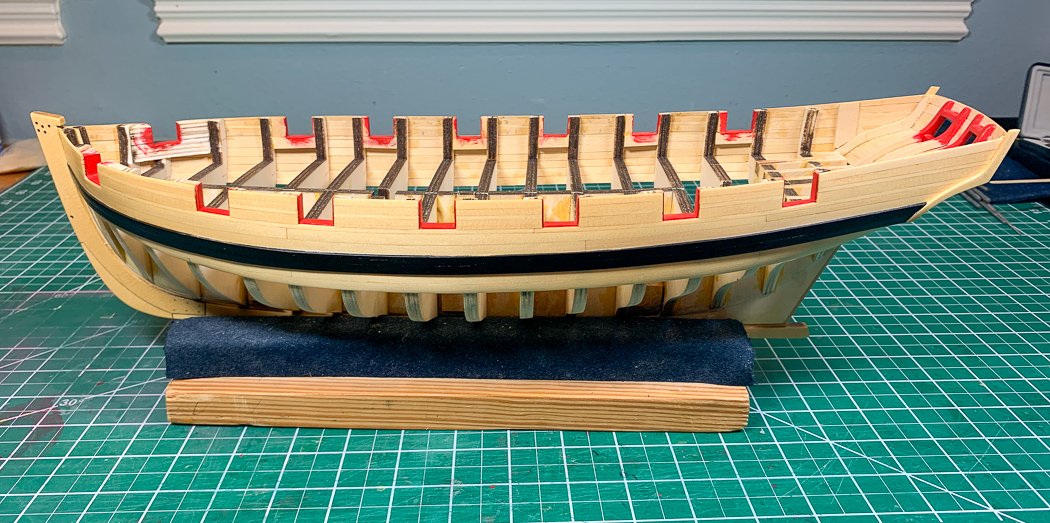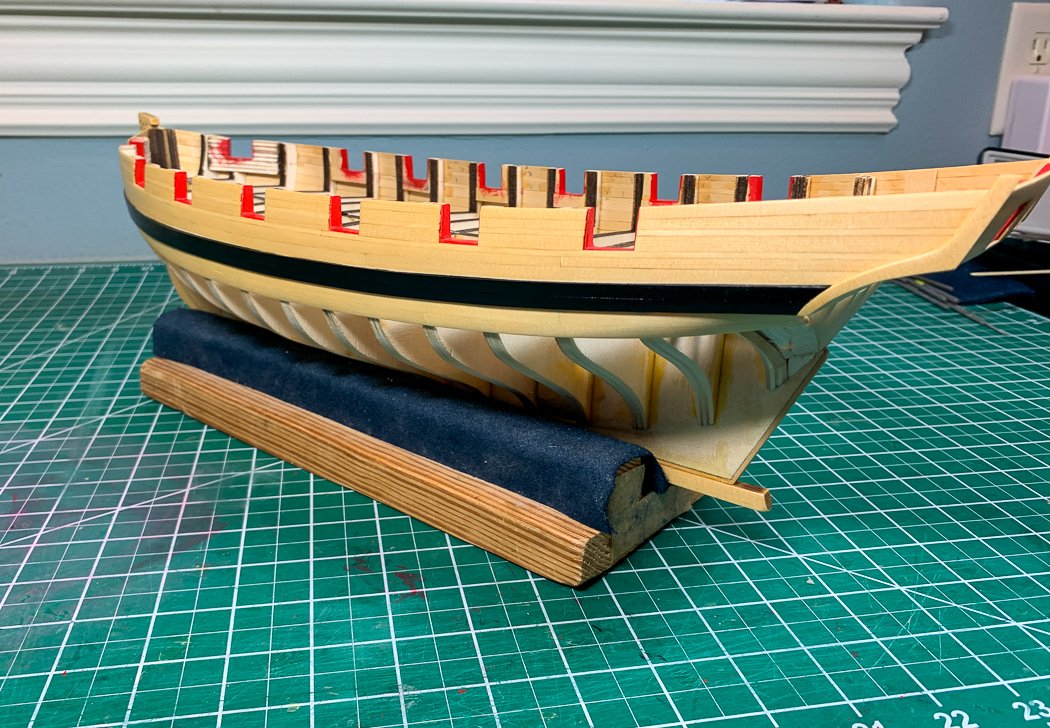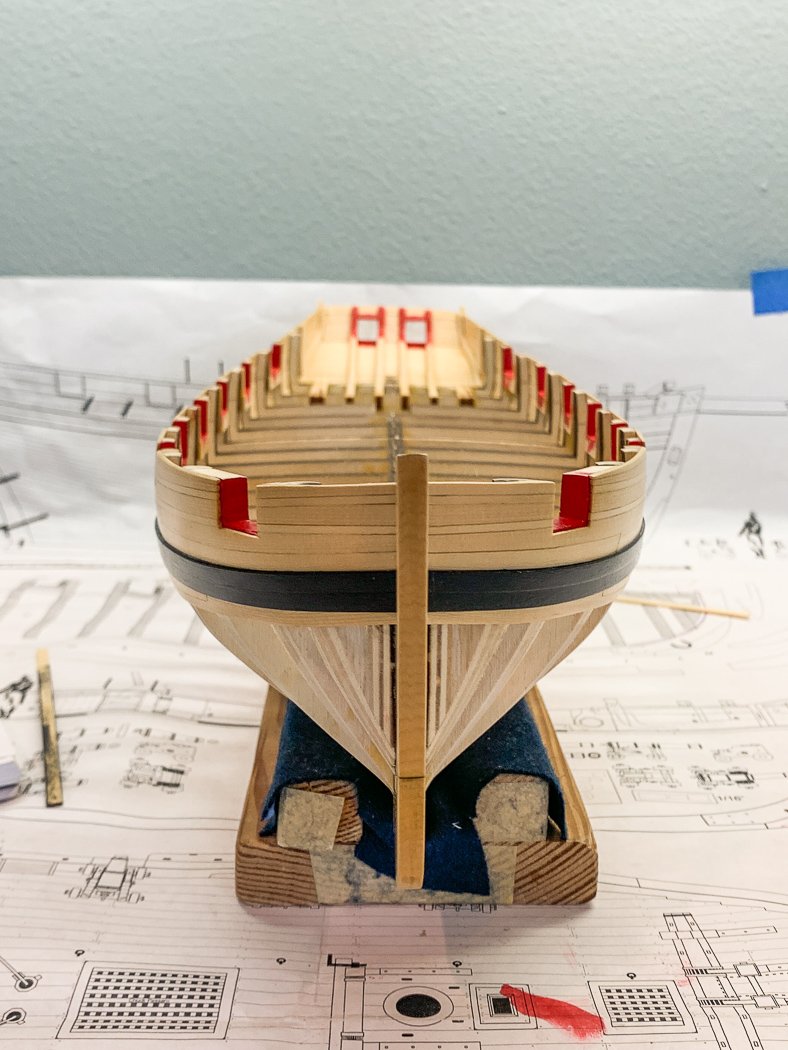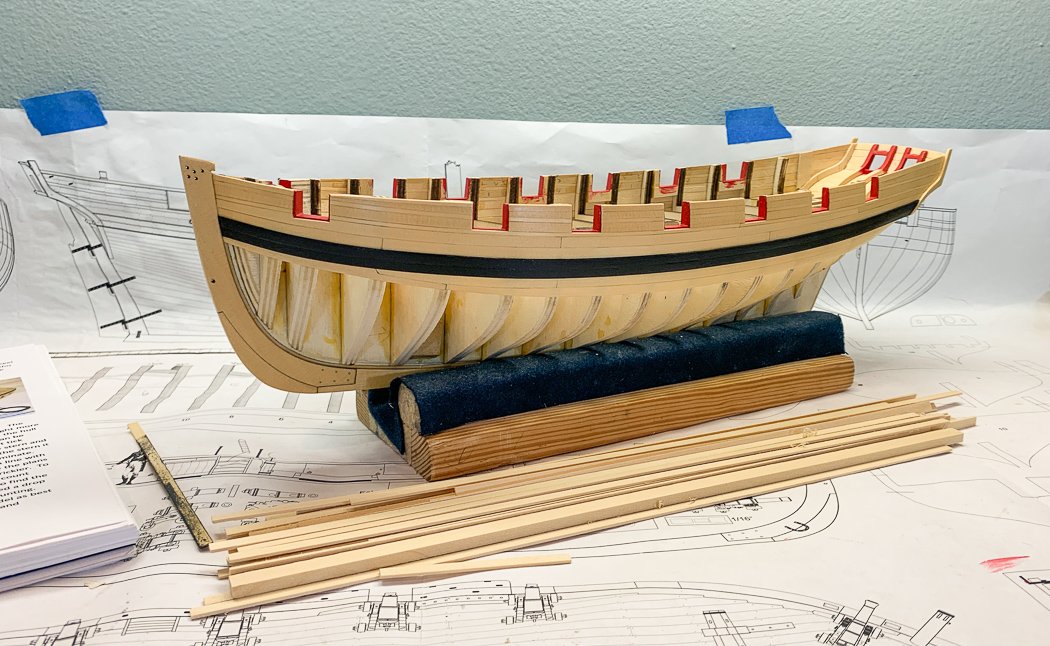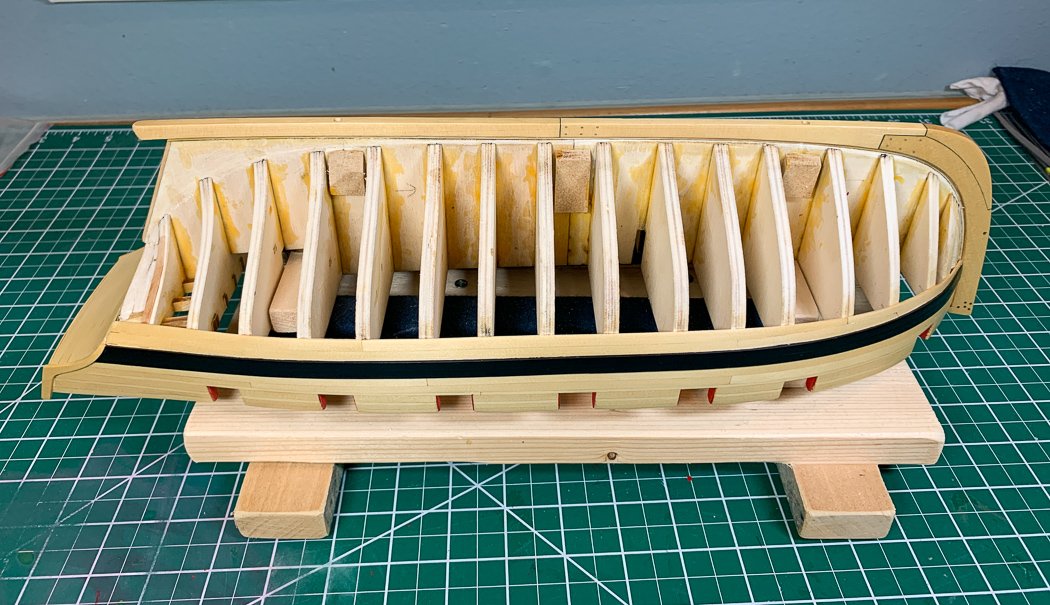-
Posts
4,121 -
Joined
-
Last visited
Content Type
Profiles
Forums
Gallery
Events
Everything posted by glbarlow
-
Willie is a cool looking dude, I like having scaled figures to stand around on my models during construction to get a sense of size. Enjoying your research on fishing craft and the modifications to Chris' design. I'm like you, no more large models for me - these small craft are more enjoyable and a lot less repetitious tasks. My head still spins from the 3,000 or more copper plates I put on Vanguard.
- 195 replies
-
- lady eleanor
- vanguard models
-
(and 1 more)
Tagged with:
-
I think there is a ”wash” that some artists put on sculptures that give them depth, sort of fills in the crevices and curves with a darker shadow. My artist son would know. However that said, I think they look fine and Dullcote would finish them off great. My opinion is darker isn’t necessary, they look realistic as they are now.
- 642 replies
-
- winchelsea
- Syren Ship Model Company
-
(and 1 more)
Tagged with:
-
So the brass will cut the profile into the wood, it doesn’t need to be sharpened, or you sharpen it as part of the filing?
- 642 replies
-
- winchelsea
- Syren Ship Model Company
-
(and 1 more)
Tagged with:
-
You're quite handy at doing it - amazing work. More amazing is how little time it takes you to do it!
- 109 replies
-
- Vanguard Models
- Flirt
-
(and 1 more)
Tagged with:
-
That’s really all you need for Cheerful, but you do need that. Chose the Byrnes saw when you’re ready, best modeling tool I own.
- 109 replies
-
- Vanguard Models
- Flirt
-
(and 1 more)
Tagged with:
-
Couldn’t choose better for your first, my only issue with this and Speedy is the historically accurate but very tiny guns. I hope you also put Cheerful on your list Bob.
- 109 replies
-
- Vanguard Models
- Flirt
-
(and 1 more)
Tagged with:
-
Such amazing work James. When I do my build log how about I just use your photos since I can’t match your quality🤣😂 Do you mind my asking, is building And photographing models your work, or are you just this good in your spare time?
- 109 replies
-
- Vanguard Models
- Flirt
-
(and 1 more)
Tagged with:
-
To say your modeling skill is next level would imply there is another level beyond, there isn’t. Your work is superb. I may have missed it somewhere, how to you get length for your moldings, a special table or home built mod? Mine Mill is limited to 5 inches.
- 589 replies
-
- le gros ventre
- cargo
-
(and 1 more)
Tagged with:
-
Thank you for all the likes and follows. It’s inspiring to know other builders are watching my progress.
- 778 replies
-
- cheerful
- Syren Ship Model Company
-
(and 1 more)
Tagged with:
-
Thanks Derek and Gart! I’m enjoying the successes and working through the mistakes.
- 778 replies
-
- cheerful
- Syren Ship Model Company
-
(and 1 more)
Tagged with:
-
Thanks for the interest, glad you’re enjoying it. I like your avatar. 😊
- 778 replies
-
- cheerful
- Syren Ship Model Company
-
(and 1 more)
Tagged with:
-
After completing the drop plank and the first two rows of planks below the wales (where the drop plank counts as two at the bow), plus installing more than one or two fashion pieces I’ve now completed the wales. I painted them using Admiralty Paints Ironwork Black, which oddly enough is duller (really more flat) than the Dull Black I normally use. I was really tempted to also paint the counter but decided to wait until I’d at least had a dry-fitting with the square tuck I’ll somehow create after getting the next 8 rows of planks on both sides. I didn’t take any photos of installing the wales, but it’s as straight forward as on any model - I did try extra hard on keeping neat paint lines. Me and Tamiya tape did ok with that, with some effort. It’s worth it to take the time getting the tape right, its either that or scrape, sand, and clean up where you didn’t. If you’re not familiar with Tamiya tape, get some. There is nothing better, blue painter’s tape isn’t even close, in getting a close tight seal for painting - for those of us like me who lack the skill to free-hand. Though I am pretty handy with an 18/0 brush to do touchup. I also followed Chuck’s instruction to thin out the wales at the bow. I cut and dry-fitted both top and bottom planks then held them side by side on a work board and tapered them down to near saxophone reed thickness. In my case they actually did fit into the rabbit. They do look so much better this way. Since I’ll be working upside down it was time for a new stand, really an old stand modified. I go for function over form with these things so its nothing fancy, just a cut-down of a stand made for my Vanguard with some cross blocks added for stability. The fun part is I used my new mill for the very first time - for the very easy job of adding a slot down the center of the cross blocks. So now I'm a miller, sorta. I added a fresh coat of poly across what is now the completed top third of the hull. Now it’s time mark the two belts with artist tape, get out the tick strips and line the hull as I start planking the 8 rows of planks that make up the top belt. Not that anything has been fast, but this next phase will be slow going to get each plank right - and as a bonus I also get to rip more planks, so Yay!
- 778 replies
-
- cheerful
- Syren Ship Model Company
-
(and 1 more)
Tagged with:
-
They aren’t typos, it is Apple making way too many decisions for me with predictive text on my iPad. I type the right word, Apple changes it to something it likes, and I don’t go back and edit. But as long as it entertains then I’m fine with it, though I really should turn off predictive text.
- 725 replies
-
- vanguard models
- speedy
-
(and 1 more)
Tagged with:
-
Your method looks great, and a good choice give the guns are so tiny. You may have converted me on frapping, at least on Flirt when I get to her, Cheerful is big enough I’m sure the coils will work. The difference in your ring bolts is striking, thanks for the detailed explanation on making them, which I’ll put to use. In the book Chris recommended on Cochrane I learned he did replace all the guns with larger ones only to find the wouldn’t work for several reasons and he had to change them back. He could carry a full broadside of the shot in his pockets as he walked the deck. See you on the other side.
- 725 replies
-
- vanguard models
- speedy
-
(and 1 more)
Tagged with:
-
Great work as usual. Darker may be too dark once on the shelf. Maybe look at the test pieces where you plan to display her.
- 642 replies
-
- winchelsea
- Syren Ship Model Company
-
(and 1 more)
Tagged with:
-
I've yet to have a cannon come loose after I've used a drip of CA to each wheel. I do use the medium viscosity version of CA just for this task but I guess if you're adverse to CA in the first place the pin makes sense, likely a good way to have the cannons consistently placed at each gun port. I'll continue with my loose coils on my guns, and with the guns run out, it is just a model after all. Everything I've read, including the book on Cochrane says Captains had near total discretion on how to manage their ships. My Captain likes coils, and CA on his cannon wheels. I'm looking forward to seeing how your Speedy turns out.
- 725 replies
-
- vanguard models
- speedy
-
(and 1 more)
Tagged with:
-
As I said, we modelers are of the obsessed. I perfectly understand having recently ripped off so many of my own models planking multiple times. BTW: In the for what it’s worth category I prefer coils for the gun tackle, perhaps not the hyper neat Flemish coils, but natural coils either side. It seems to me this makes the guns more action ready, but perhaps not the best for routine sailing. Wrapped around the tackle makes sense too but again, in my opinion, makes it look a tad bulky. Either way is fine I think but I also think neither is better or more accurate than the other. I don’t see a British naval captain with a Operations Manual that designates ‘Proper arrangemention of gun tackle rope; chapter 4, subsection 3.2’ 😂🤣
- 725 replies
-
- vanguard models
- speedy
-
(and 1 more)
Tagged with:
-
I’m sure a British war ship sailing the Med during a war as Speedy was didn’t store the guns, and as this is a model. It would be completely wrong not to have them. I wouldn’t worry about the size of the ring bolts, we all tend to obsess about things that won’t matter on the completed model. I doubt your friends from three feet away will say “why are those ring bolts out of scale.” Really nice work on those tiny guns. While historically correct I wish it had a bit larger guns just for looks and easier to rig😕
- 725 replies
-
- vanguard models
- speedy
-
(and 1 more)
Tagged with:
-
Well said Rusty. I totally agree that adapt, improvise, overcome is the modeler’s creed.
- 778 replies
-
- cheerful
- Syren Ship Model Company
-
(and 1 more)
Tagged with:
About us
Modelshipworld - Advancing Ship Modeling through Research
SSL Secured
Your security is important for us so this Website is SSL-Secured
NRG Mailing Address
Nautical Research Guild
237 South Lincoln Street
Westmont IL, 60559-1917
Model Ship World ® and the MSW logo are Registered Trademarks, and belong to the Nautical Research Guild (United States Patent and Trademark Office: No. 6,929,264 & No. 6,929,274, registered Dec. 20, 2022)
Helpful Links
About the NRG
If you enjoy building ship models that are historically accurate as well as beautiful, then The Nautical Research Guild (NRG) is just right for you.
The Guild is a non-profit educational organization whose mission is to “Advance Ship Modeling Through Research”. We provide support to our members in their efforts to raise the quality of their model ships.
The Nautical Research Guild has published our world-renowned quarterly magazine, The Nautical Research Journal, since 1955. The pages of the Journal are full of articles by accomplished ship modelers who show you how they create those exquisite details on their models, and by maritime historians who show you the correct details to build. The Journal is available in both print and digital editions. Go to the NRG web site (www.thenrg.org) to download a complimentary digital copy of the Journal. The NRG also publishes plan sets, books and compilations of back issues of the Journal and the former Ships in Scale and Model Ship Builder magazines.

